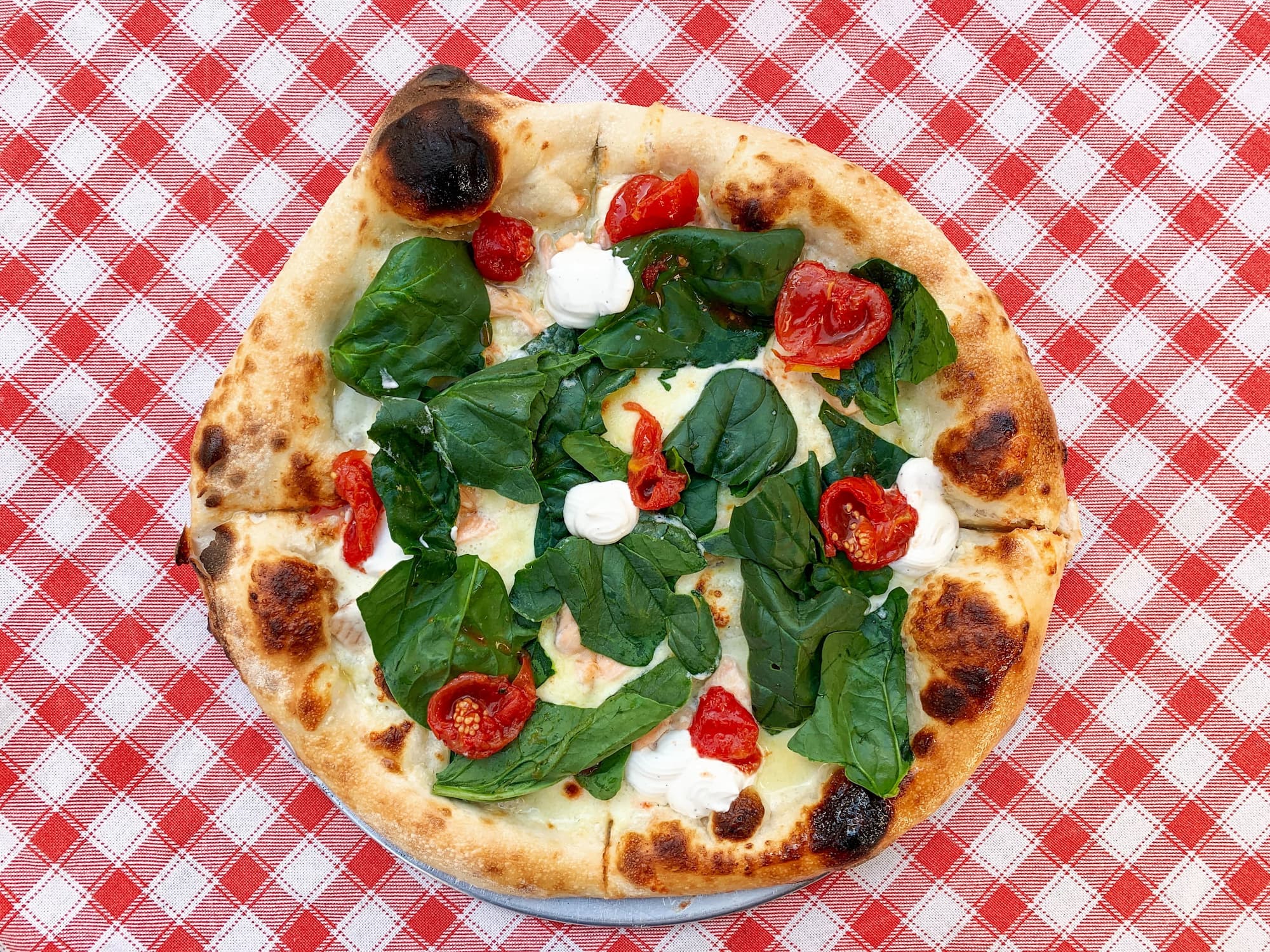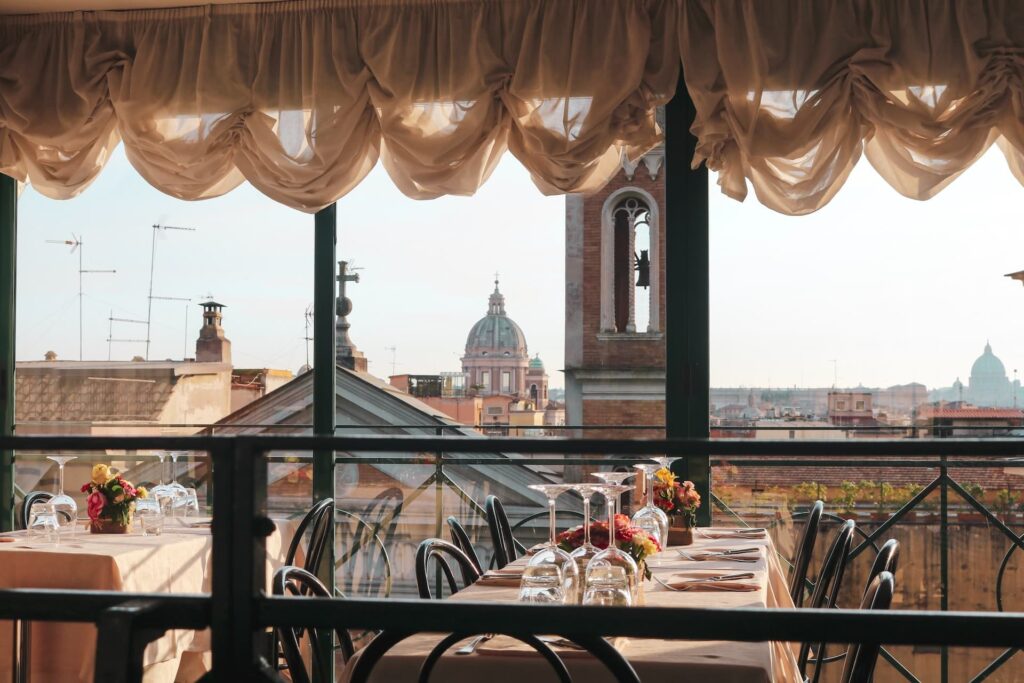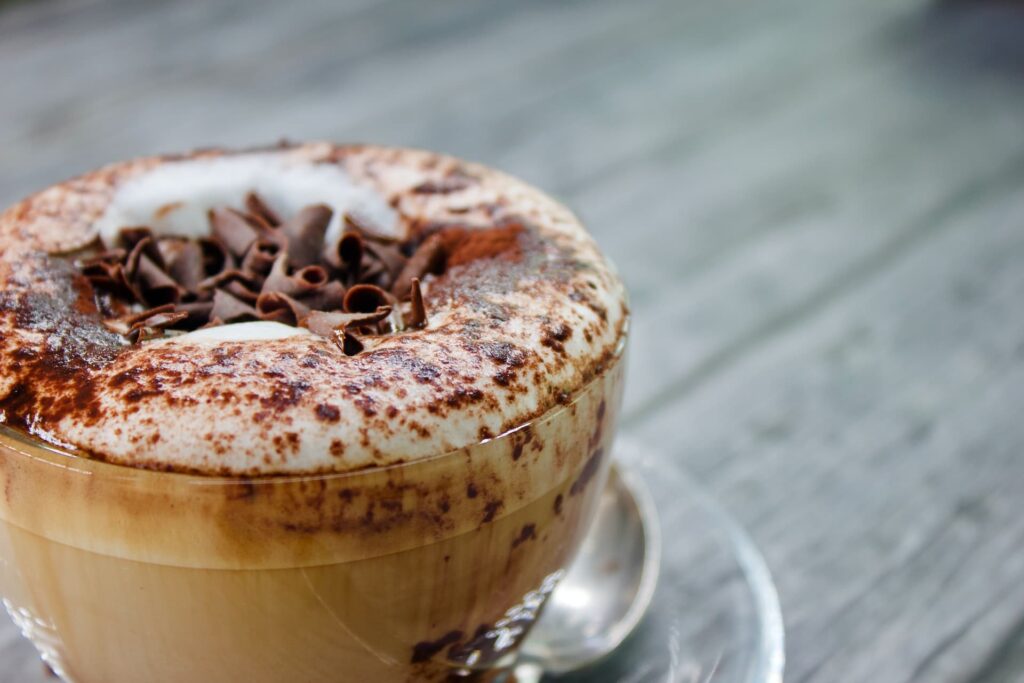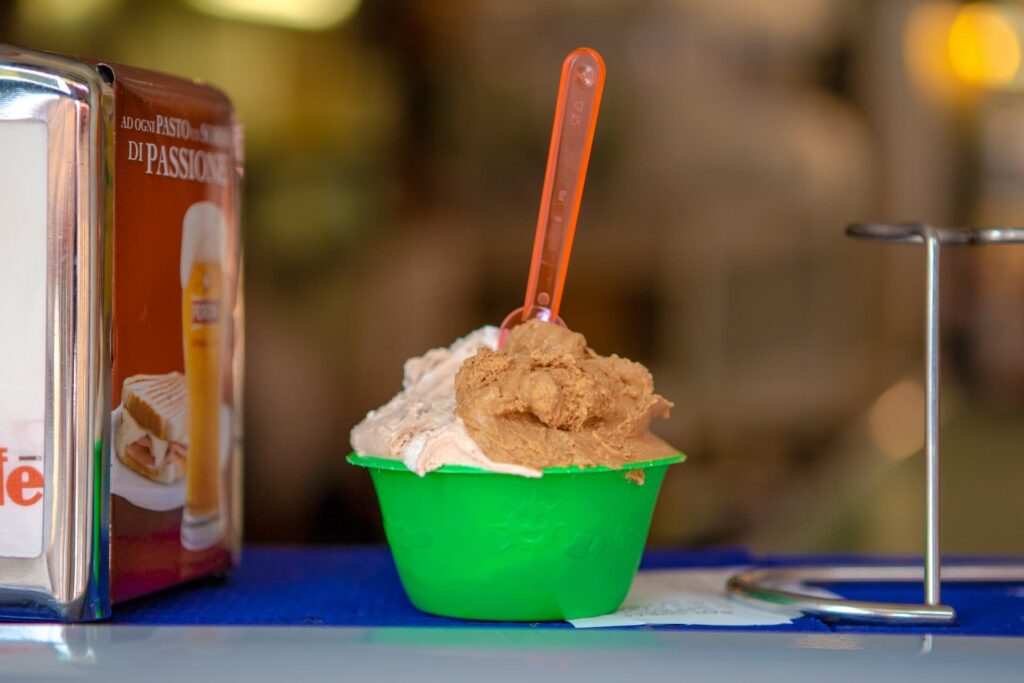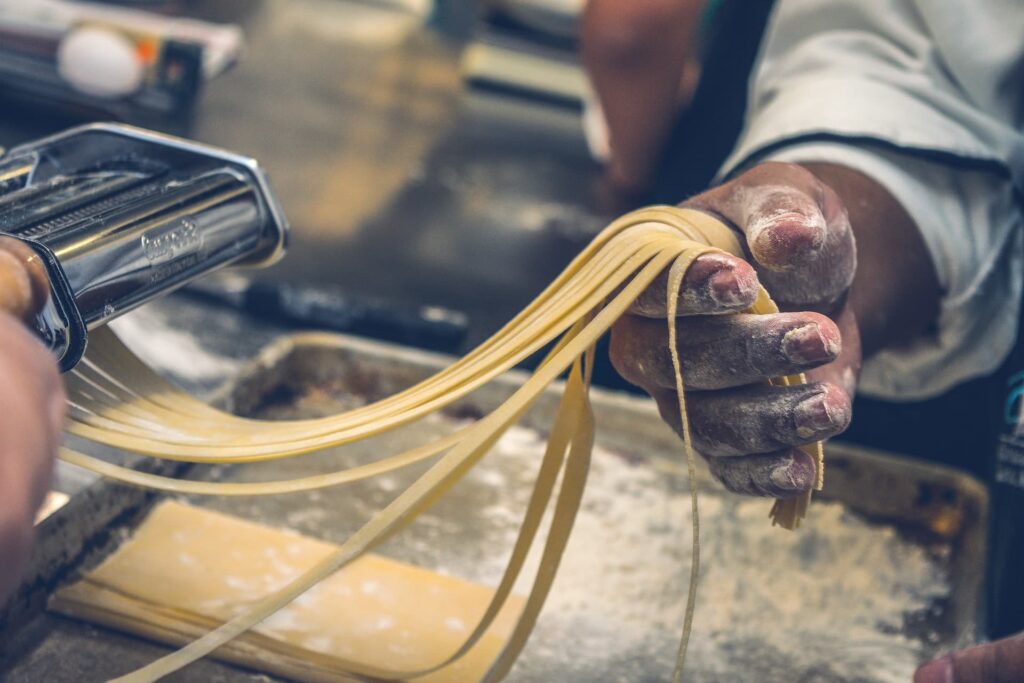60 Most Fascinating Italy Food Facts & Tips About Italy Food Culture
Curious about the most fascinating Italy food facts? Food is a big part of Italian culture and learning about Italian food facts is a great way to get to know the Italian culture. These interesting facts about Italy and Italian food facts will help you prepare for an upcoming Italy trip or simply help satisfy your craving for fun facts about a different country.
If you are planning an Italy trip be sure to consult these Rome travel tips of 54 tourist mistakes to avoid in Rome!
Globe Gazers contains affiliate links and is a member of the Amazon LLC Associates Program. If you make a purchase using one of these Amazon links, we may receive compensation at no extra cost to you. Read our disclaimer for more information.
Interesting Facts About Italy: 60 Italy Food Facts & Facts About Italian Food Culture
Facts About Italian Sauces & Dressings
1. Olive Oil is Gold
Well, not literally. But it holds a very important place in the Italian cuisine scene. While it might not always be the first ingredient that comes to mind when you envision Italian food it is sacred.
2. Different regions in Italy produce different flavors of Olive Oil
The colors and flavors of Olive Oil produced depend on the climate where different olives are grown.
3. Olive Oil tastings are a thing
You’ve heard of food tours and wine tastings but have you heard of olive oil tastings? Because of the many variations, olive oil tasting is a unique and worthwhile foodie experience in itself.
4. Tomato Sauce comes from the Aztecs
It is said that tomato sauce was first used in Aztec food and that the condiment has Mexican roots, mainly used in salsas. What differentiates Italian tomato pasta sauce is the addition of olive oil and garlic.
5. There’s such a thing as “Italian Black Gold”
And it’s known as balsamic vinegar. Modena is the Italian town known as the birthplace of this beloved condiment.
Italy Food Facts Across Different Regions
6. Different regions are known for different Italian cuisine: Southern Italy
Southern Italy, with its Mediterranean climate, is known for seafood like sardines and anchovies. It’s also known for its heavy use of olive oil, as Southern Italy produces most of the country’s olive oil. As well, it is known for sheep’s milk cheeses such as creamy burrata.
7. Different regions are known for different Italian cuisine: Northern Italy
Northern Italy, with its cooler climate, is known for balsamic vinegar, fresh pasta, Parmigiano Reggiano cheese and ham. These are only two examples of how Italian cuisine differs across different regions of the country.
8. Ringing in the New Year
Across Italy this includes consumption of pork sausage, lentils and grapes along with nuts and dried fruits in hopes of good fortune and prosperity.
Facts About Italian Cuisine at Italian Restaurants
9. Primo is the first course
When dining out in Italy the first course is typically a pasta dish.
10. Secondo is the second course or main course
At most Italian restaurants the main course is typically a meat or fish dish.
11. Caesar salad was not invented in Italy
But it was invented by an Italian named Caesar Cardini. He just happened to be in Tijuana, Mexico at the time.
12. You can pick and choose from the menu
When dining out in Italy you are under no obligation to order both a first and second course. You can simply pick and choose from across the menu, including from the appetizers and sides sections, and feel confident that you are not in the wrong.
13. Lunch is the most important meal of the day
Il pranzo is the Italian equivalent of the Spanish siesta in that many Italian people will go home for their lunch hour to have a large, long meal. Lunch is served around 1:00 in the afternoon in Italy.
14. Dinner time is later
Compared to dinner time in the United States, Italian people in Italy tend to have dinner around 8:30 in the evening so you won’t find too many Italian kitchens cooking dinner earlier in the evening. What happens before dinner time? Aperitivo, of course!
15. Breakfast is the lightest meal
Which is not often the case in the US. Breakfast in Italy typically consists of only a cappuccino with a light pastry.
16. Aperitivo is similar to a happy hour
Often served at bars, the way to order is to begin with a drink listed under the aperitivi section of the menu. Typical drinks for this time of day include prosecco, aperol spritz, campari spritz, coca cola.
Along with your drink, you’ll be served snacks that can range from simple nuts and crackers to bigger buffets. Follow the young crowd or ask around to find the best place for aperitivo.
Heading to Rome and wondering where to make the most of aperitivo? Consult this guide.
17. Save the bread basket for later
In Italy, when you’re served bread it is not considered an appetizer to tide you over until your meal arrives. Instead, you consume the bread alongside your meal and use it at the end for ‘fare la scarpetta’ which is wear you mop up every last drop of sauce on your plate with the bread.
Typically, bread is served along with pasta dishes so you can soak up and eat the sauce at the end.
18. Water is served warm
Not only in Italy but across most of Europe, water is served without ice. Personally, this is my preference and I’m always asking for water sans ice in the US. So know that if you want ice, you’ll have to specifically request it.
19. First, say buon appetito
Which means ‘good appetite..’ Whether you’re eating in Italian homes or Italian restaurants it’s customary to say buon appetito before beginning a meal.
Facts About Italian Coffee Culture
20. Italy’s first coffee shop
Opened in Venice in 1683. Italians also invented the Moka pot, and you can purchase one to make your own delicious coffee the Italian way!
21. Water is a palate cleanser
When served alongside your coffee, you should drink your water first to cleanse the palate so you can better enjoy the taste of your coffee.
22. No cappuccino after 11am
Ordering a milky coffee after 11am in Italy goes against Italian coffee culture. It simply isn’t done as milky coffee is considered a breakfast food. Instead, a more typical order is an espresso that you take down while standing at the bar.
23. Italian coffee culture moves fast
Unlike in France where a leisurely cup of coffee is the norm, or in the US where we sit and work for hours at coffee shops with the coffee flowing non-stop, in Italy you take your coffee down at the bar and keep moving on with your day.
For the most part, this is more the norm.
24. The bars are actually coffee shops
Since you’re often taking your coffee standing right at the bar this makes sense. These ‘bars’ also serve snacks and drinks as the day progresses.
25. A latte is not what you think it is
If you order a latte in Italy, they will bring you a glass of milk! Instead you want to ask for caffe latte so they know to bring you coffee with that milk.
26. Similarly, ‘con panna’ does not get you coffee with cream
Well, at least not the kind of cream you want in your coffee. This is often listed in the coffee menu and I made the mistake of ordering caffe con panna because I usually take my coffee with cream.
The result? I was brought a shot of espresso and a second cup filled with whipped cream!
27. Coffee to go is rare
Although you’ll now find some shops selling American-style coffees to go it’s still quite rare for the smaller coffee bars around Italy. Once I had a bar owner pour me cappuccino in a small plastic cup and simply cover it with foil so I could take it to go!
28. Coffees are much smaller
Again, you’ll likely find some shops now that are catering to American tourists with larger coffees but typically coffee sizes in Italy are quite small, relatively speaking. I often asked for two cappuccinos at once to make up for this!
Facts About Italian Desserts
29. The difference of Italian ice cream
Gelato, as it’s called, has more milk than cream and less (or no) eggs. There’s also less air in gelato, making it more dense and therefore creamier than ice cream.
30. Florence is considered the birthplace of gelato
While you’ll of course find gelato all across Italy, be extra sure to try some in Florence if you have the chance!
31. The most popular gelato flavor in Italy is chocolate
Followed by pistachio. Lemon is also included in the top 5 most favored flavors of gelato in Italy.
32. The word ‘tiramisu’ means ‘pick me up’
And the dessert originated in Treviso, Italy.
33. Biscotti was originally served with vin santo, or sweet wine
Whereas nowadays it is much more commonly enjoyed alongside a cup of coffee.
34. Cannoli hail from Sicily
And the word cannoli is plural. Cannolo is one, and the popular Sicilian sweet treat was originally made for Carnivale.
Facts About Italian Pasta
35. You do not add cheese to your pasta
When there’s seafood in the dish, no cheese! Any other pasta dish? Go for it. But at all costs I encourage you to refrain from sprinkling cheese onto any seafood dish you order in Italy.
36. Italy is home to the rarest pasta in the world
If you’re lucky, you might find Su Filindeu, which translates to ‘the threads of God,’ in Sardinia. Only a handful of living people know how to make this delicate pasta and they only make it once or twice a year!
37. Your pasta is not undercooked, it’s ‘al dente’
Which might be considered undercooked by American standards. But in Italy the typical way to prepare pasta is al dente, firm ‘to the tooth.’
Want to make Italian-style pasta at home? This Rome cooking class has inspired me to make my own homemade pasta many times and it’s so much fun!
Whether you’re making pasta for a dinner you’re hosting or simply as a fun activity with kids, here are some supplies to consider using:
38. Don’t look for garlic bread in Italy
You won’t find it. Italian cuisine uses garlic sparingly, and Italians pair unflavored bread with their meals so as not to compete with or overpower the taste of the dish.
39. Don’t try to order spaghetti and meatballs
American Italian food is not the same food served in Italy and one example of this is spaghetti and meatballs. Typically, pasta and meat are served separately in Italy, but spaghetti and meatballs is thought to have originated from Italian immigrants to the US.
40. Same goes for chicken parmesan
Which is not authentic Italian food. This dish is likely an evolution of the Sicilian dish of eggplant parmesan, so consider ordering this instead.
41. It’s cacio e pepe, not fettuccine alfredo
Well truly these dishes are not one and the same, but if you’re craving the latter then cacio e pepe is what you should try. This traditional Italian dish is simple yet deliciously made with cheese and pepper.
Fettuccine Alfredo is not something you’ll find in Italy unless you seek out the restaurant Il Vero Alfredo in Rome.
42. The origins of pasta might surprise you
While Italy is popular for its pasta dishes, pasta is actually thought to have originated from Ancient Greece or China.
43. There are more than 600 different pasta shapes
And different pasta shapes are ideal for different dishes. Based on the pasta shapes, they hold sauce differently.
44. Italians eat a lot of pasta
Supposedly the average Italian person eats 60 pounds of pasta each year, triple the amount consumed per year by the average American.
Facts About Italian Pizza
45. Pizza is simpler
Yes, you’ll still find pastas with exciting toppings in Italy. But generally speaking pizza in Italy is on a thin crust with fresh ingredients and sauce that’s said to be far less sweet than what we’re accustomed to in the U.S.
46. Pepperoni pizza is not what you think it is
Any attempts to order this in Italy will get you a pizza covered in bell peppers. Instead, ask for ‘pizza con salame piccante’ or ‘pizza alla diavola.’
47. Pizza is not for sharing
At Italian restaurants when you order a pizza it is presumed you’re ordering it for yourself. Unlike in America, where pizza means a large communal pie, pizza in Italy is single serve.
48. Don’t expect sliced pizza
Pick up your fork and knife and be ready to cut your pizza itself as it will arrive to the table uncut.
49. The earliest pizzas were flat bread
Popular among Ancient Egyptians, Romans and Greeks.
50. Modern-day pizza was born in Naples
Neapolitan pizza began primarily as a fast food to meet the needs of Naples’ working class.
51. Pizza Margherita is said to be named after Queen Margherita
Who requested to try pizzas when visiting Naples. Her favorite happened to bear the colors of the Italian flag with toppings including white mozzarella cheese, green basil and red tomatoes.
52. Pizza became popular in the US before in Italy
While pizza was still being seen as food for the lower class in Naples, Italian immigrants to the US began popularizing pizza in the United States well before the food took off across Italy.
53. Making Neapolitan pizza is an art
And has been awarded ‘Intangible Cultural Heritage’ status by UNESCO.
Try your hand at the art of pizza-making at home with this guide and kit!
54. Naples is also known for fried pizza
So while you should certainly be sure to try the baked pizzas from the wood-fired ovens don’t neglect the fried pizza while in town.
55. Most restaurants in Italy will not serve pizza for lunch
If you want round pizza during the day you must go specifically to a pizzeria. Or, you can visit a cafe that serves rectangle-shaped pieces of pizza by weight (pizza al taglio, by the slice). If you want to order a round pizza at a restaurant, plan to visit for dinner.
Facts About Italian Wine and Toasting Etiquette
56. Wine for lunch is common
Again, not only in Italy but across much of Europe. Wine is not uncommon over a 1-2 hour lunch, sipped slowly alongside the meal.
57. Italy is the biggest wine producer in the world
And the average Italian drinks between 37-54 liters of wine per year.
58. Prosecco was invented in Italy
And is the more affordable alternative to France’s champagne.
59. Italy has more than 2000 grape varieties
To help fuel its wine production.
60. There are rules for how to toast
It’s considered bad luck to toast with water or while crossing glasses. And be sure to look everyone in the eyes when toasting!
Conclusion: 60 Italy Food Facts
There you have it! 60 interesting Italy food facts to help you learn more about Italian culture. What interesting facts about Italian cuisine would you add to the list? What questions do you still have about Italy food facts? I’d love to hear them in the comments!
